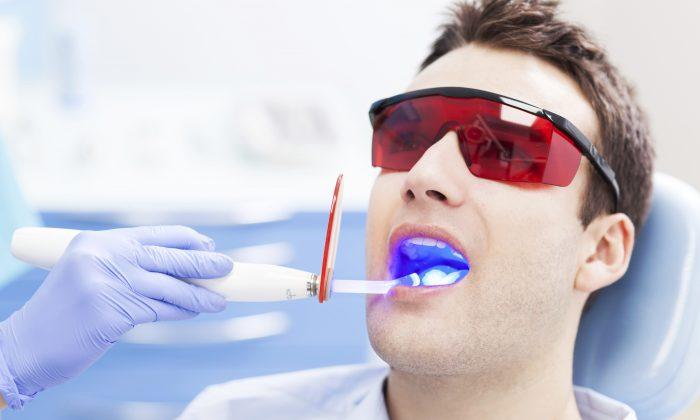Many people imagine Luke Skywalker’s light saber when they hear “laser” and envision heads being lopped off.
In the real world, lasers have become precision cutting instruments in industry and medicine where they are used for eye surgery and many other procedures.
Dental lasers have been available for about 20 years and use “light” instead of a drill or blade to cut tooth or gum.
Traditionally, dental lasers were either “soft-tissue lasers,” used to cut gum, or “hard-tissue lasers,” which removed tooth or bone. Newer lasers can do both.
Advantages for Patients
Lasers have several advantages that patients like. There is often less trauma and, therefore, less pain and quicker healing when surgery is done with a laser. Very simple procedures can sometimes even be done without anesthesia.
In addition, some dentists use lasers to help treat periodontal or gum disease in a procedure called LANAP. The laser can help disinfect the periodontal pockets that harbor bacteria.
The laser can also be used to remove excess gum, release muscle attachments, and do certain biopsies. And it can be used to treat painful aphthous ulcers, often providing immediate pain relief.
Hard-Tissue Lasers
When it comes to removing decay, certain lasers called “hard-tissue lasers” can be used. The advantage to patients is avoiding the drill and sometimes the need for an injection.
Many patients in my New York City dental office who experience anxiety at the sound or even thought of the drill, are accepting of the laser. Until recently, hard-tissue lasers were slow, but this past December, a new company, Convergent Dental, released a laser called Solea that removes tooth almost as fast as a drill.
The Solea laser can be used for routine fillings when no metal is present in the tooth. This is almost always the case with younger patients, and some of them many never have to experience the “dental drill” if their dentist has a laser.
Even when the procedure cannot be completed with the laser, it provides a limited analgesic effect so that it may be possible to do the drilling without an injection.
Future of Lasers
In the future, lasers may be used for additional procedures such as customized implant preparations. Because lasers use light, certain shapes may be achievable that cannot be done with conventional drills.
Some lasers are computer-controlled, opening up the possibility that dentists could watch a computer screen while they work, much like laparoscopic surgery. This may allow for better visualization and more precision.
Dentistry is experiencing many new technologies that improve patient care and the patient experience. Lasers can be added to that list.
This article was sponsored by Gallery 57 Dental.
Gallery 57 Dental
24 W. 57th St., Suite 701
(Between 6th & 5th Avenues)
www.gallery57dental.com





